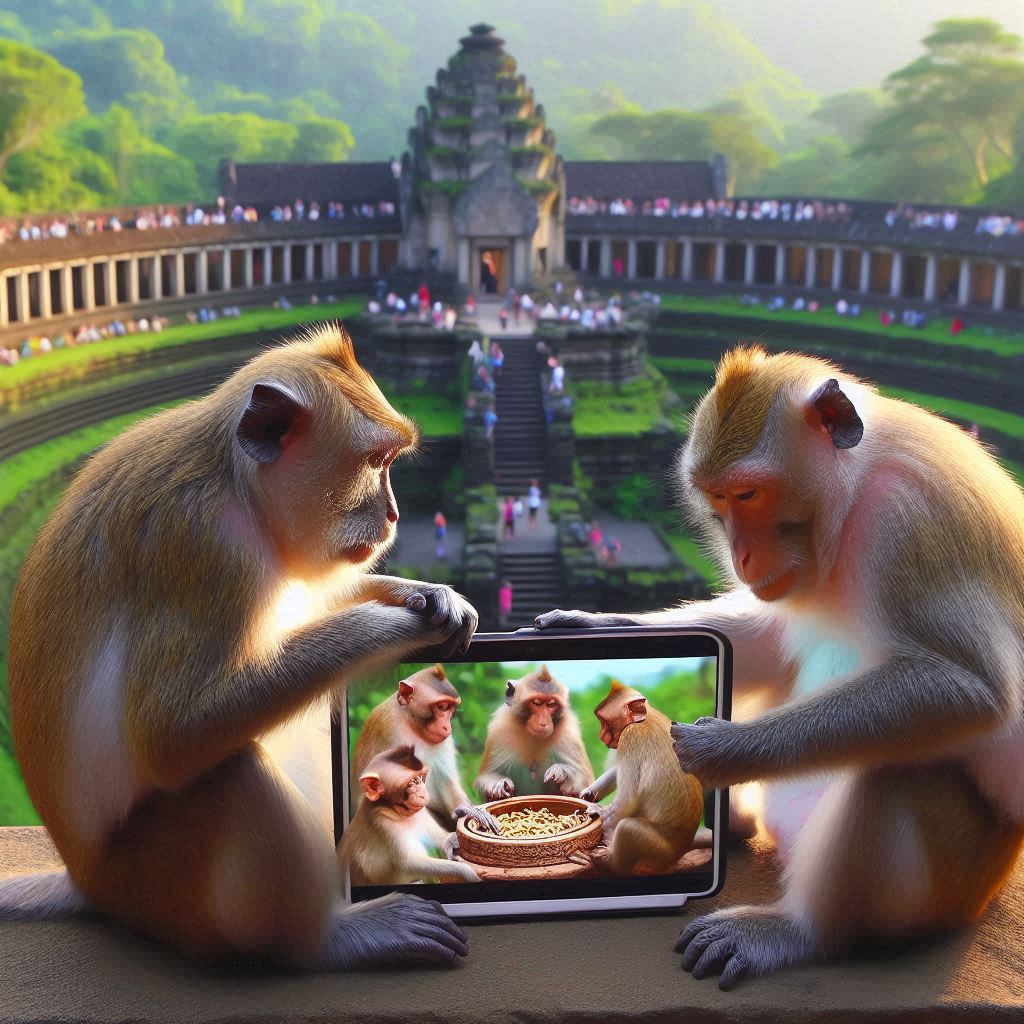
Viral Monkey Videos: Understanding Their Online Appeal
Share
Viral Monkey Videos: Understanding Their Online Appeal
From TikTok scrolls to YouTube shorts, monkey videos dominate feeds around the globe. Whether it’s a baby monkey being rescued, a capuchin using tools, or a sassy macaque throwing shade, these videos consistently rack up millions of views and shares. But what is it about monkeys that captivates online audiences so powerfully? This article explores the psychology, cultural fascination, and digital dynamics behind viral monkey videos—and what they reveal about our deeper connection to animals.
The Human-Monkey Connection
One reason monkey videos go viral so easily is our innate connection to primates. As our closest evolutionary relatives, monkeys share many human-like traits: expressive faces, opposable thumbs, complex social interactions, and emotional responses. This similarity draws people in—it’s like watching a mirror of ourselves in a more playful, innocent form.
Their relatability amplifies empathy. When a monkey hugs a caregiver, helps a peer, or reacts to a situation with apparent emotion, we project our own experiences and emotions onto them. This emotional resonance drives engagement, shares, and comments, fueling virality.
Top Reasons Monkey Videos Go Viral
1. Expressiveness and Humor
Monkeys have incredibly expressive faces and dramatic body language, making even mundane actions funny or endearing. A monkey eating a banana with intense focus or reacting dramatically to a situation mirrors the kind of exaggerated humor humans love. These reactions are easy for viewers to anthropomorphize, triggering laughter or awe.
2. Novelty and Surprise
Many monkey videos feature unusual behavior: a monkey riding a bicycle, opening a soda can, playing a video game, or caring for another animal. These surprising moments challenge our expectations and spark curiosity, making them more likely to be shared.
3. Cuteness Overload
Infant monkeys, in particular, trigger strong nurturing instincts in viewers. Their big eyes, small size, and clumsy movements hit all the marks for “baby schema,” a psychological trigger that compels humans to care for and protect young creatures.
4. Emotional Storytelling
Rescue and rehabilitation videos often follow a clear emotional arc—from despair to hope. A malnourished monkey is found, cared for, and eventually thrives. These stories generate powerful emotional engagement and are highly shareable, especially when paired with uplifting music or narration.
5. Escapism and Entertainment
In a world filled with stress and information overload, a 30-second monkey video offers a lighthearted break. It provides feel-good content that transcends language and cultural barriers, making it universally appealing.
Human-Animal Relationships in the Digital Age
The popularity of monkey videos reflects more than just entertainment preferences. It points to a broader human desire for connection with nature and non-human intelligence. As urban living distances people from wildlife, digital media fills the gap—offering daily glimpses into the lives of animals we might never encounter in person.
Additionally, these videos often spark important conversations about animal welfare. Many viral videos include rescue stories, and some accounts use their platforms to raise awareness about illegal wildlife trade or deforestation. However, not all monkey content is ethical, and this raises critical questions about consent, exploitation, and appropriate care—especially for primates kept in captivity for views.
The Ethics of Monkey Content
While monkey videos attract massive audiences, not all of them are created with the animals’ best interests in mind. Some creators exploit monkeys for clicks, staging scenarios that cause stress or harm to the animals. These videos may still go viral—but they perpetuate misinformation and poor treatment.
Responsible creators, on the other hand, highlight education, conservation, and genuine care. They often work with sanctuaries, veterinarians, or rescue organizations. As a viewer, it’s important to be mindful of the source, context, and treatment of animals in any viral content.
Conclusion: Why We Click, Like, and Share
Monkey videos thrive online because they strike a unique balance of relatability, surprise, and emotion. They entertain, soothe, and even educate us—all within a few seconds. But behind their popularity lies a deeper truth: we are fascinated by our primate cousins because they reflect parts of ourselves, both in behavior and emotion.
As monkey content continues to evolve online, it’s important to balance our appetite for engaging content with a commitment to ethical storytelling and animal welfare. Viral or not, monkeys deserve to be viewed with the same respect and care we give our fellow humans.
Suggested SEO Keywords:
viral monkey videos, why monkey videos go viral, monkey video psychology, monkey content online, emotional animal videos, primates and human behavior, ethical monkey videos, monkey TikTok, monkey YouTube channels, monkey rescue stories
